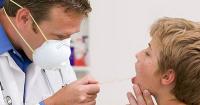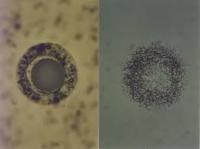-
Centralized leadership, major reform needed to bolster U.S. biodefense
A comprehensive report on U.S. biodefense efforts calls for major reforms to strengthen America’s ability to confront intentionally introduced, accidentally released, and naturally occurring biological threats. The report details U.S. vulnerability to bioterrorism and deadly outbreaks and emphasizes the need to transform the way the U.S. government is organized to confront these threats. Recommendations include centralizing leadership in the Office of the Vice President; establishing a White House Biodefense Coordination Council; strengthening state, local, territorial, and tribal capabilities; and promoting innovation through sustained biodefense prioritization and funding.
-
-
$100 million NIAID contract to SRI International to develop radiation exposure treatment

SRI International has been awarded a resource contract of up to $100 million over five years by the National Institute of Allergy and Infectious Diseases (NIAID), part of the National Institutes of Health, for the development of products to mitigate or treat acute or delayed effects of radiation exposure.
-
-
Study: Persian Gulf could experience deadly heat
Detailed climate simulation shows that the Persian Gulf region would likely cross the threshold of survivability unless mitigation measures are taken. That tipping point involves a measurement called the “wet-bulb temperature” which combines temperature and humidity, reflecting conditions the human body could maintain without artificial cooling. That threshold for survival for more than six unprotected hours is 35 degrees Celsius, or about 95 degrees Fahrenheit, according to recently published research (the equivalent number in the National Weather Service’s more commonly used “heat index” would be about 165 F). The researchers say that hot summer conditions that now occur once every twenty days or so “will characterize the usual summer day in the future.”
-
-
Birth tourism in the U.S. delivers complex medical cases in neonatal units
Researchers examined reported “birth tourism” in the United States and how it affects neonatal intensive care unit hospitalization. They found that expectant mothers traveling to the United States with the expressed purpose of giving birth before returning home are presenting more complex medical, social, and financial challenges at a large metropolitan children’s hospital. The researchers documented a higher medical complexity, longer hospital stays, and increased re-hospitalization among babies born to traveling families.
-
-
Web sites offer incomplete information on safely storing firearms in the home
The are four safety measures which should be followed to keep children safe around guns: The guns should be kept locked and unloaded, and ammunition should be stored in a locked and separate location. The vast majority of Internet pages visited by people searching for firearms storage guidance, however, prove to be duds when it comes to giving accurate and complete information on how to keep children safe around guns. Only 2 percent of Web pages with information on firearm storage correctly identified all four practices shown to protect children and adolescents living in homes with guns.
-
-
Pediatricians: Food insecurity ongoing health risk to U.S. children
The latest data show that more than fifteen million U.S. children live in households still struggling with hunger. For the first time, the American Academy of Pediatrics (AAP) is recommending that pediatricians screen all children for food insecurity. In a new policy statement identifying the short and long-term adverse health impacts of food insecurity, the AAP also recommends that pediatricians become familiar with and refer families to needed community resources, and advocate for federal and local policies that support access to adequate, nutritious food.
-
-
One in 8 children in U.S. at risk for measles

Gaps in measles vaccination rates in the United States place one in eight children at risk for becoming sick from the highly contagious illness, according to an analysis of national vaccination coverage. Measles can lead to pneumonia, encephalitis, hospitalization and occasionally, death. Those who are not vaccinated or are undervaccinated are highly susceptible to becoming ill because measles is very contagious through direct contact and droplets that can spread through the air.
-
-
Researchers develop rapid method for water, air, and soil pathogen screening
Researchers have developed a highly sensitive, cost-effective technology for rapid bacterial pathogen screening of air, soil, water, and agricultural produce in as little as twenty-four hours. “Rapid and reliable pathogen detection in field samples is critical for public health, security and environmental monitoring. Current methods used in food, water or clinical applications rely on labor and time-intensive culturing techniques while activities such as dairy farming, wastewater and runoff treatment necessitates real-time monitoring of pathogens in environment samples,” said one of the researchers.
-
-
Water security test bed to focus on bolstering municipal water security
Water is the foundation for life. People use water every single day to meet their domestic, industrial, agricultural, medical, and recreational needs. After the September 2001 terrorist attacks, water system security became a higher priority in the United States. The Water Security Test Bed (WSTB) at Idaho national Laboratory can be used for research related to detecting and decontaminating chemical, biological, or radiological agents following an intentional or natural disaster. The WSTB will focus on improving America’s ability to safeguard the nation’s water systems, and respond to contamination incidents and to natural disasters.
-
-
Surveillance technology to aid in disease detection, response

The Ebola crisis has highlighted a need to bolster global surveillance and enhance the capability to react appropriately to further outbreaks, experts say. This should include making use of modern technologies for detecting disease, sharing information in real time and analyzing data. “We cannot afford to wait for the next outbreak of infectious disease before putting effective systems in place to safeguard public health,” says one expert.
-
-
Former peanut company owner to jail for 28 years for fatal 2009 salmonella outbreak
In a rare instance of a prison sentence in a food contamination case, Stewart Parnell, the former owner of Peanut Corporation of America, was sentenced to twenty-eight years in prison for his role in a 2009 salmonella outbreak which killed nine people and sickened hundreds. Parnell, 61, who once managed the Peanut Corporation of America, and his brother, Michael Parnell, who was a food broker for the company, were convicted on Monday on federal conspiracy charges for knowingly shipping salmonella-tainted peanuts to customers.
-
-
Two states changes gun laws, and suicide-by-firearm rates in the two states shift

A new study examining changes in gun policy in two states finds that handgun purchaser licensing requirements influence suicide rates. Researchers estimate that Connecticut’s 1995 law requiring individuals to obtain a permit or license to purchase a handgun after passing a background check was associated with a 15.4 percent reduction in firearm suicide rates, while Missouri’s repeal of its handgun purchaser licensing law in 2007 was associated with a 16.1 percent increase in firearm suicide rates.
-
-
Cleaning explosives pollution with plants
Biologists have taken an important step in making it possible to clean millions of hectares of land contaminated by explosives. The researchers have unraveled the mechanism of TNT toxicity in plants, raising the possibility of a new approach to explosives remediation technology. TNT has become an extensive global pollutant over the last 100 years and there are mounting concerns over its toxicity to biological systems.
-
-
Radioactive contaminants found in coal ash from all three major U.S. coal-producing basins

A new study has revealed the presence of radioactive contaminants in coal ash from all three major U.S. coal-producing basins. The study found that levels of radioactivity in the ash were up to five times higher than in normal soil, and up to ten times higher than in the parent coal itself because of the way combustion concentrates radioactivity. The finding raises concerns about the environmental and human health risks posed by coal ash, which is currently unregulated and is stored in coal-fired power plants’ holding ponds and landfills nationwide.
-
-
Solving the mystery of arsenic-contaminated water
Can water ever be too clean? If the intent is to store it underground, the answer, surprisingly, is yes. In a new study, scientists have shown that recycled water percolating into underground storage aquifers in Southern California picked up trace amounts of arsenic because the water was too pure. The research sheds light on a poorly understood aspect of groundwater recharge with purified recycled water, namely the potential mobilization of arsenic. Arsenic is a naturally occurring element that can cause organ failure and cancer in humans with prolonged exposure above established health thresholds. The findings pose a problem for Orange County, California, which differs from most communities in that it purifies treated wastewater instead of discharging it directly into rivers and oceans – but the problem goes beyond Orange County.
-
More headlines
The long view
Ransomware Attacks: Death Threats, Endangered Patients and Millions of Dollars in Damages
A ransomware attack on Change Healthcare, a company that processes 15 billion health care transactions annually and deals with 1 in 3 patient records in the United States, is continuing to cause massive disruptions nearly three weeks later. The incident, which started on February 21, has been called the “most significant cyberattack on the U.S. health care system” by the American Hospital Association. It is just the latest example of an increasing trend.
